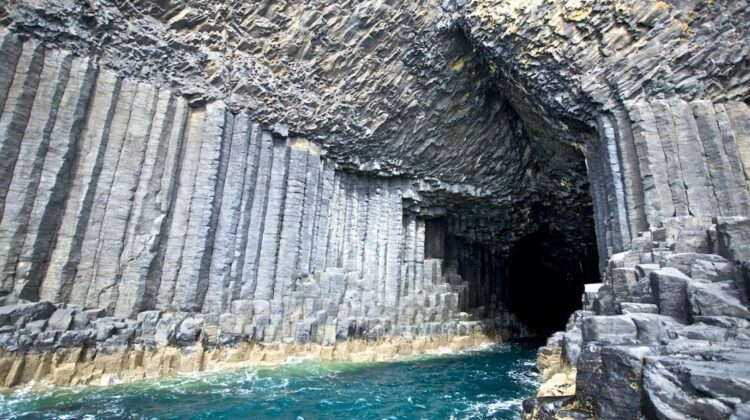
Imagine a cathedral carved by giants from hexagonal black basalt columns. Now, fill it with the echoing music of the ocean. Welcome to Fingal’s Cave, a sea cave on the uninhabited island of Staffa, Scotland, that’s as much a geological wonder as it is a place of legend.
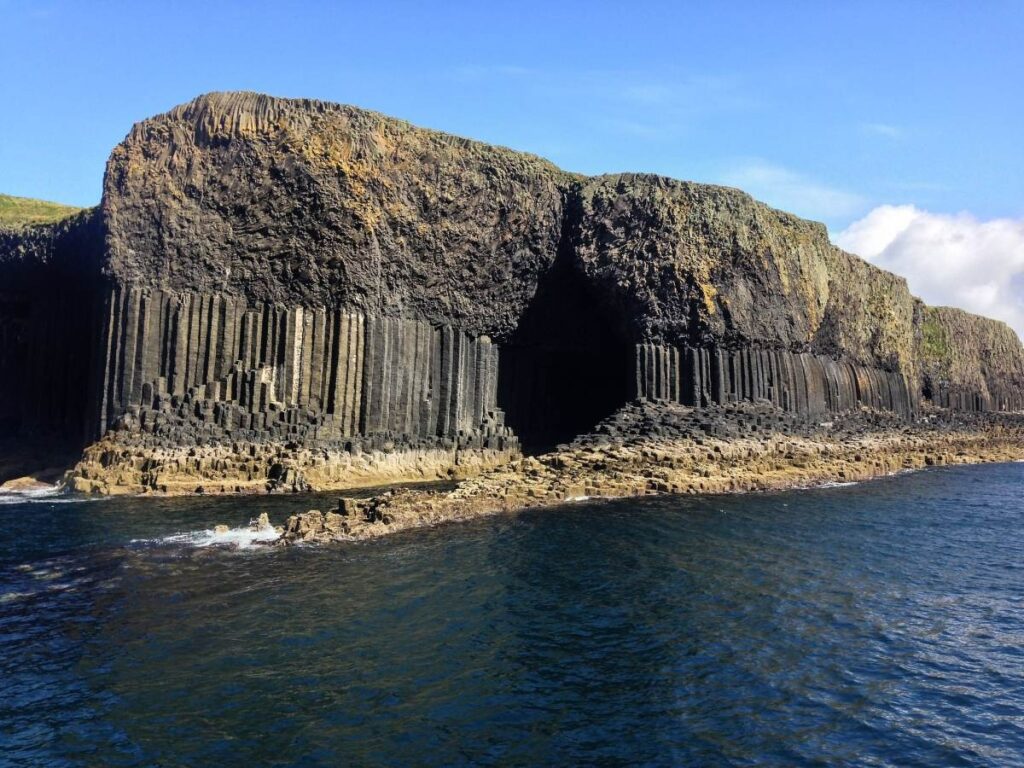
This incredible sea cave was carved entirely out of hexagonally-jointed basalt columns from an ancient Paleocene lava flow over 50 million years ago. These columns were formed as the lava gradually cooled and contracted, creating the unique hexagonal fracture pattern seen throughout. Similar hexagonal formations can be found at other famous sites like the Giant’s Causeway in Northern Ireland, or the breathtaking Symphony of the Stones in Armenia
Fingal’s Cave features a huge arched entrance that opens into a cathedral-like cavern, the length of which is estimated to be between 227 feet (69 metres) and 270 feet (82 metres). Its arched roof is described as reaching between 66 feet (20 metres) and 72 feet (22 metres) and filled with the ebb and flow of the Atlantic ocean. From inside the emerald-hued grotto, the fractured basalt columns create a natural walkway above the swirling waters, providing a surreal experience for visitors able to explore on foot during calmer conditions.

The cave’s unique look and atmosphere have captured the imaginations of many famous artists, writers, and composers over the centuries. In 1772, it was brought to prominence by famous naturalist Sir Joseph Banks. Later, the Romantic poet James Macpherson penned an epic Scottish poem featuring the eponymous hero “Fingal,” forever lending his name to the extraordinary sea cave.
In Irish mythology, the hero he was referring to is actually known as Fionn mac Cumhaill. It seems Macpherson rendered this name as “Fingal”, which means “white stranger”, likely mishearing or misinterpreting the old Gaelic spelling of “Finn”.
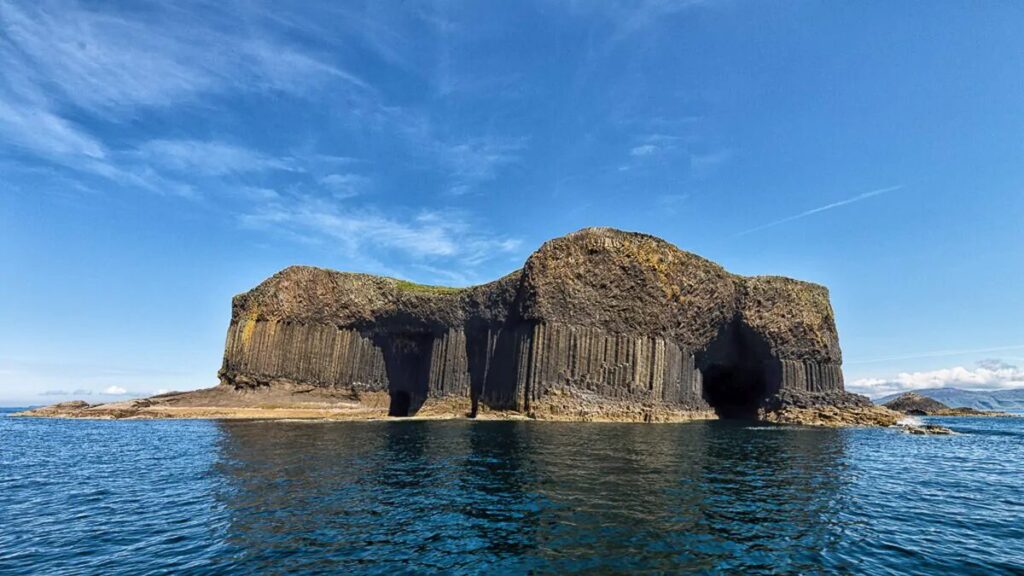
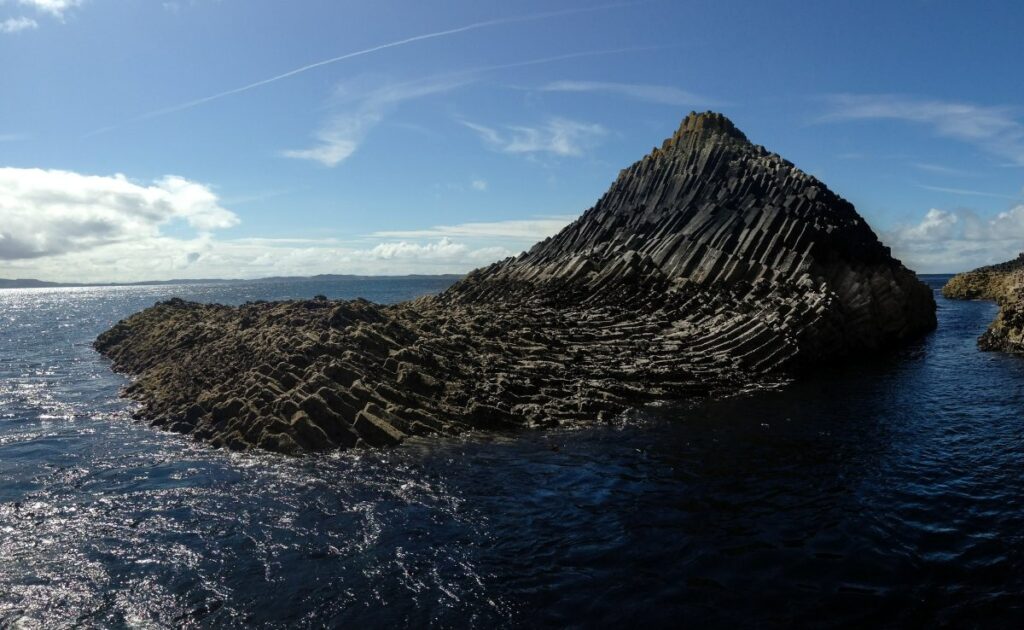
Interestingly, the legend of the nearby Giant’s Causeway involves this same mythological figure Finn (or Fionn) building the causeway of basalt columns across the sea between Ireland and Scotland to battle a Scottish rival. But, according to science, these natural formations on the two sides of the North Channel of the Irish Sea were formed from the same massive lava flow millions of years ago.
According to another legend, around 500 AD, St. Columba, a monk who exiled himself from Ireland due to his “war of the book”—a conflict with the Irish king over a book he secretly copied—used Fingal’s Cave on Staffa to reflect on “the eternal, hexagonally jointed basalt columns, sprouting from the graves of ancient, enlightened Celtic monks.” When the Vikings arrived around 521 AD, they killed all the monks near Staffa and Iona, and St. Columba hid the book in the cave just in time.

After the Vikings were defeated, only part of the book was recovered. From its remnants, a new language, Gaelic, emerged. Gaelic uses only 18 letters, and the 6 missing letters are still hidden deep within the cave. Today, Fingal’s Cave is renowned for its acoustics, possibly because it “sings with 6 extra letters.”
Regardless of the truth content of this legend (St. Columba was a very real person though and founded a monastery on the nearby island of Iona), Fingal’s Cave is indeed famed for its acoustics. Nicknamed “The Cave of Melody” in Gaelic, the sound of crashing waves resonates through the cavernous space, creating a hauntingly beautiful natural music hall. The hexagonal columns, formed from ancient lava flows, act like internal flutes, amplifying the ocean’s song.
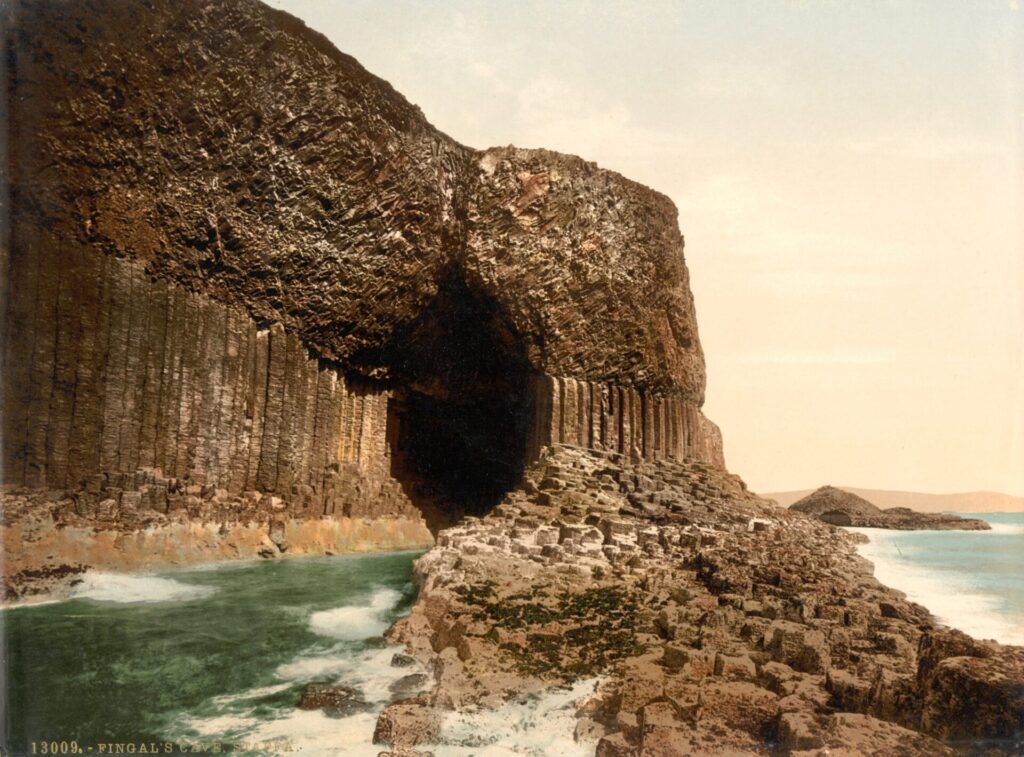
German composer Felix Mendelssohn was so entranced by the cave’s strange acoustics during his 1829 visit that he composed the iconic “Hebrides Overture” (also known as “Fingal’s Cave”), helping popularize it as a must-see destination. Other creative luminaries inspired by Fingal’s Cave include Jules Verne, William Wordsworth, John Keats, and artist J.M.W. Turner who immortalized it in his vivid 1832 painting.
Today, Fingal’s Cave is a protected part of Scotland’s stunning Inner Hebrides. Boat tours allow visitors to marvel at the cave’s entrance, and for the truly adventurous, kayaking and even coasteering (swimming through caves) are options to experience the magic firsthand. This 3-Day Isle of Mull and Iona Small-Group Tour from Glasgow (affiliate link) includes a stop at the cave.
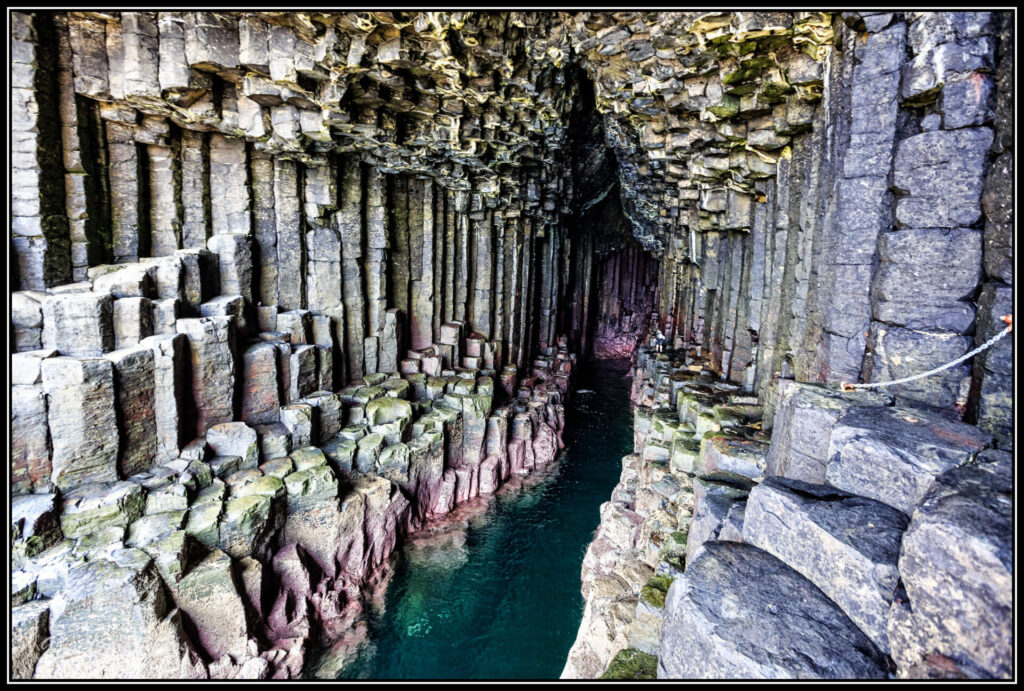
Fingal’s Cave is a unique blend of natural wonder, myth, and artistic inspiration. It’s a place where the power of nature and the whispers of legend come together to create an unforgettable experience.

Leave a Reply